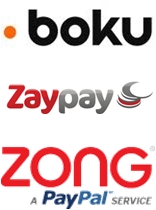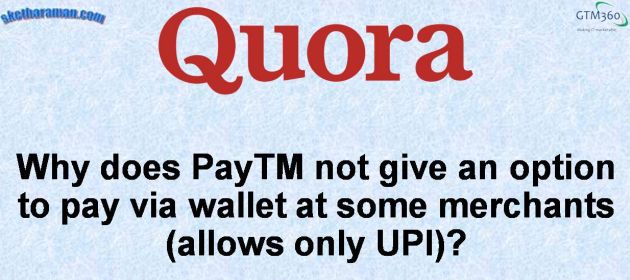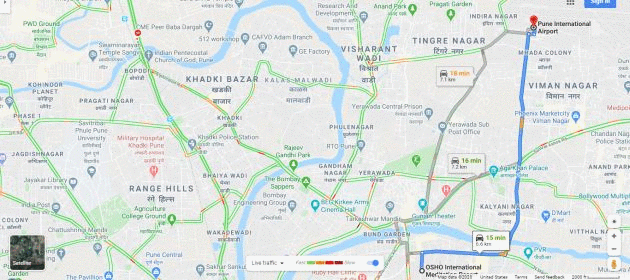This is a slightly edited version of my answer to the following question on Quora:
I had a similar experience recently.
I scanned the Merchant’s QR code at a restaurant with my PayTM app. PayTM asked me to link my bank account to complete the payment via UPI. I refused to do so because I wanted to make the payment with my credit card on file in the PayTM app.
I then asked the cashier for the PayTM-only QR. He told me that their establishment accepted PayTM only for UPI – not Wallet or Credit Card.
So it’s not PayTM. It’s the Merchant who tells PayTM which payment options to offer or not on the app.
This brings us to the topic of payment “rails” i.e. the backend systems involved in processing cashless payments. The leading electronic payment rails are listed below:
Top Payment Rails
- Prepaid Wallet / Card: Closed-loop i.e. stored value is kept inside a PSP’s app or plastic card. Examples: PayTM / PayZapp / PhonePe (India); Venmo / Square (USA); PayPal (global)
- Bank Real Time Payment: Money gets transferred in real time from Payer’s bank account to Payee’s bank account. To qualify as a retail payment method, at least one party among the Payer or Payee must be an individual while the other can be an individual or a business. This is also called Account-to-Account Real Time Payment (A2A RTP). Examples: UPI / NEFT / IMPS (India); FPS / PayM / PayByBank (UK); Zelle / Venmo / PopMoney (USA); iDEAL (Netherlands); EBA myBank (EU); AliPay / WeChat Pay (China)
- Bank Bulk / Batch Payment: Bulk payments processed in a batch. Typically used for salary, vendor and government benefits payments. Examples: NACH (India); ACH (USA); BACS (UK)
- Card: Open-loop credit card and debit card. Examples: Visa / MasterCard (global); RuPay (India); China Union Pay (China, Global)
- Carrier Billing: Offered by Mobile Network Operators and other (nonbank) third parties that have an ongoing billing relationship with the consumer, this rail does not involve banks at all. Examples: Boku / Zong-PayPal (global)
- Check Imaging: Allows Merchants to accept checks, just as they accept cash, at the point of sale. It verifies the account balance of the Consumer and guarantees that the check will not bounce when it’s presented to the Drawee bank later. It also does all of this while the Consumer is still standing in the checkout line. Example: Fed Check 21 (USA).
Different rails have different pedigree and value proposition in different markets. For example,
- Card Rail is by far the largest rail in developed markets in terms of transaction volumes and values
- Bank RTP has a strong value proposition in emerging markets where there’s a low penetration of credit cards and POS terminals but it has a weak value proposition in developed markets where credit cards and POS terminals are ubiquitous. More at Don’t Go Global Without Cracking The Value Proposition For Foreign Markets.
A Payment Service Provider (PSP) / Digital Payment App can work off of some rails and not the others. For example, PayTM and PayZapp work off of rails #1, 2 and 4; PhonePe works off of #1 and #2; and Google Pay works off of #2 in India and #4 in USA.
Given below is a partial list of who offers these various electronic payment rails:
- Banks typically offer rail #2 to a wide swathe of Merchants.
Going by the ubiquity of UPI QR in the market, whichever company has acquired micro merchants has done a fantastic job. Also banks are offering POS at throwaway prices. Little confusing, considering MDR was supposed to become zero after budget!https://t.co/1j6AdEtfes
— Ketharaman Swaminathan (@s_ketharaman) November 8, 2019
- Banks tend to restrict rail #3 to large Merchants.
 Banks tend to offer #4 only to medium and large Merchants. Independent Sales Organizations (ISO) (e.g. CyberSource, Authorize.net, ccAvenue, RazorPay) offer it to small Merchants. Merchant Aggregators (e.g. PayPal, Square, Stripe) offer it to micro and nano Merchants. More at How do I accept credit cards and debit cards?.
Banks tend to offer #4 only to medium and large Merchants. Independent Sales Organizations (ISO) (e.g. CyberSource, Authorize.net, ccAvenue, RazorPay) offer it to small Merchants. Merchant Aggregators (e.g. PayPal, Square, Stripe) offer it to micro and nano Merchants. More at How do I accept credit cards and debit cards?.- A few years ago, there was a lot of buzz around Rail #5. Bank haters predicted that it would disrupt banks. I expressed my skepticism to retainer customers in my 2013 post entitled Banks Have Nothing To Fear From TELCOs. I stand vindicated: We don’t hear much about Carrier Billing these days. In fact, its leading player Zong has been acquired by bank-centered payment fintech PayPal during the interim period.
- Rail #6 is more than just check truncation, which is merely a way of transporting images of checks, rather than paper checks, between Banks and Clearing House (but not Merchants). AFAIK, this rail is available only in USA.
Just as Banks offer some rails to some Merchants and not to others, Merchants are also at liberty to accept some rails and not the others. The restaurant mentioned at the start of this post only accepts rail #2 although the digital payment apps through which it accepts rail #2 do support rails #1 and #4.
Many people confuse QR code based payments for rail #2. Take the author of Finextra Blog post titled In the wake of COVID-19, QR codes are taking over the world. Will Visa and MasterCard survive? for instance.
Actually, QR code is not a rail. It’s only a convenient method of directing a payment to the right Merchant in the absence of a POS terminal. As Bharat QR (India), Starbucks / Walmart (USA) and mVisa (global) stand testimony, QR is used even in rails #1 and 4. I said as much in my response to this post:
There are so many Visa / MasterCard card-linked payment methods that work via QR codes e.g. PayTM and PayZapp in India; Starbucks and WalMart Pay in USA. Why will QR codes kill Visa / MasterCard?
I’ll update this post if and when I hear back from the author.
Every payment rail has its own characteristics by way of operating model, number of moving parts, cost, benefit, settlement times, fraud protection levels, and other parameters.
As long as everything works fine, the common man can treat all rails and digital payment apps the same, namely, as a way to pay without cash.
But the moment a payment fails or an unauthorized transaction happens on his account, our Average Joe will suddenly get exposed to the minutiae and complexities of different rails. Whether he likes it or not, he’d have to navigate through the differences between different rails and even different products on the same rail. See PSA: Insist On Receipt When You Pay By NEFT, UPI, FPS Etc. and Credit Card Versus Debit Card. That’s rarely a pleasant experience.
That’s why payments must work all the time.
Major Product Risk for COIN v. Other Hardware Products: "Fitbit may count 95% of your steps but if it’s a little off here & there few people notice. (But) a credit card needs to work every time, if it doesn’t, it causes a huge amount of pain." https://t.co/TkUXBbci6r
— GTM360 (@GTM360) May 25, 2020
Even 99.99% success rate is not good enough for an electronic payment rail.
Amazon tests Whole Foods payment system that uses hands as ID ~ https://t.co/AgTuASjvJa via @nypost .
Even 99% accuracy doesn't cut it in payments: Amazon Hand Pay is already 99.99% accurate but Amazon will launch it only after it becomes 99.9999% accurate.
— Ketharaman Swaminathan (@s_ketharaman) October 4, 2019
In yet a sign that it’s a highly customer-centric company, Amazon recently decided to postpone the launch of its Amazon Hand Pay product until it achieves Six Nines accuracy level.
PS: There are many other electronic payment rails such as RTGS, FedWire, TARGET2, etc. They’re typically used for corporate and interbank payments (B2B payments). They’re not covered here since this post is about retail payments, where one or both sides of the payment involves an individual. I’ve also kept out cryptocurrencies like Bitcoin since they resemble assets more than payment methods.


